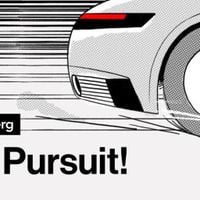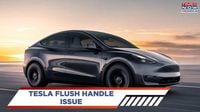On September 19, 2025, Tesla found itself in the spotlight for reasons that have nothing to do with range, speed, or self-driving wizardry. Instead, the world’s most talked-about electric carmaker announced a sweeping redesign of its door handles—a move prompted by mounting safety concerns, regulatory scrutiny, and a spate of troubling real-world incidents. The change, according to Tesla’s Head of Design Franz von Holzhausen, aims to make it easier for occupants to escape their vehicles in emergencies, especially when power is lost or panic sets in.
The issue isn’t new to Tesla owners or industry observers. For years, the company’s flush, futuristic door handles have been a defining feature, lauded for their aerodynamic efficiency and minimalist look. But as Bloomberg and CNN have reported, these sleek handles have also been at the center of at least 140 incidents where passengers were trapped inside Teslas—sometimes with dire consequences. According to a recent Bloomberg investigation, several cases resulted in serious injuries, and some even ended in tragedy when rescuers couldn’t open the doors after a crash.
The details are sobering. In one incident, parents had to break their own car windows after buckling their children in, only to find themselves locked out due to an unresponsive door handle. In other cases, passengers unfamiliar with the car’s manual release mechanisms—often hidden behind speaker grilles or beneath rubber mats—were unable to escape quickly in emergencies. These stories, compiled from National Highway Traffic Safety Administration (NHTSA) investigations and owner complaints, have fueled a growing sense of urgency around the need for a fix.
So, what’s Tesla’s solution? During a podcast interview on Bloomberg Hot Pursuit! released September 19, 2025, Franz von Holzhausen revealed that the company is working on a unified door-release mechanism. The goal, he explained, is to combine the electronic and manual door-opening systems into a single, intuitive button. "The idea of combining the electronic and manual door-opening mechanisms into a single button, in my opinion, makes sense. It’s what we’re working on," von Holzhausen told Bloomberg, emphasizing the importance of a design that works seamlessly in a panic situation.
Currently, Tesla’s door systems vary by model. The Model S and Model X feature handles that deploy and retract, while the Model 3 and Model Y use mechanically extending handles. All models include some form of internal manual release, but as multiple outlets have noted, these can be difficult to locate—especially for children or first-time passengers. The situation is even more complicated in the rear seats, where the manual release is often tucked away and not immediately visible or accessible.
The timing of Tesla’s announcement is no coincidence. Just days before von Holzhausen’s interview, the NHTSA opened a formal investigation into nearly 175,000 Model Y vehicles from 2021. The probe was triggered by at least nine consumer complaints about exterior door handles failing to work when the car’s 12-volt battery voltage dropped. In some cases, owners reported being unable to open doors from the outside and having to break windows to get back inside—sometimes with children trapped in the back seat. According to Times Now Auto, there’s currently no dashboard warning to alert drivers to door handle issues stemming from low battery voltage, compounding the risk.
The NHTSA’s investigation is still in its early stages, and no recall has been issued yet. But the agency’s focus on the reliability of electronic door locks and the accessibility of manual overrides has put additional pressure on Tesla to act swiftly and decisively. As regulators dig deeper, Tesla faces the challenge of not only fixing the problem for future models but also addressing concerns for the hundreds of thousands of vehicles already on the road.
Beyond the U.S., the controversy has caught the attention of international regulators as well. In China, authorities are considering a ban on fully concealed door handles—a move that could take effect as soon as July 2027. Every Tesla model currently uses some form of concealed handle for aerodynamic reasons, so a regulatory shift in China would have significant implications for the company’s global design language. Von Holzhausen acknowledged these pressures, telling Bloomberg that Tesla is studying the challenges posed by potential regulatory changes and is prepared to adapt: "We’ll have a really good solution for that."
The redesign, if successful, could mark the end of an era for Tesla’s iconic door handles. The Model S, for example, is known for its protruding handles that extend as you approach the vehicle—a signature feature that may soon be replaced by a more standardized, safety-first design. As Not a Tesla App observed, Tesla’s push toward a single, unified handle design could streamline production, improve reliability, and reduce costs, albeit at the expense of some brand-defining aesthetics.
But aesthetics are taking a back seat to safety. Tesla’s First Responder Emergency Guides already instruct that, in the event of a severe incident—such as airbag deployment or a cut-off pyro fuse—the car’s electronic door locks will automatically unlock. However, as Not a Tesla App points out, this system isn’t foolproof. Mechanical damage from a crash can still jam the doors, which is why first responders often need extrication tools like the Jaws of Life. The current two-part system, with separate electronic and manual releases, can confuse occupants and delay rescue efforts—a risk Tesla now seems intent on eliminating.
For owners, the changes can’t come soon enough. While Tesla maintains that safety is a top priority, critics and advocates alike have called for more robust, user-friendly solutions. The hope is that the new design will not only prevent future tragedies but also set a new standard for emergency egress in electric vehicles—an issue that’s likely to gain even more attention as cars become increasingly reliant on electronic systems.
It remains to be seen how quickly Tesla can roll out these changes and whether existing vehicles will benefit from the redesign. Von Holzhausen was careful to note that implementation will likely be gradual, taking into account both new and current models. For now, though, the message is clear: safety, not style, is driving Tesla’s next big innovation.
The coming months will reveal whether Tesla’s bold move can restore confidence and keep its drivers—and their loved ones—safe when it matters most.





